The Joy and Benefit of Backyard Turkeys
2024, No. 08 — October 4th
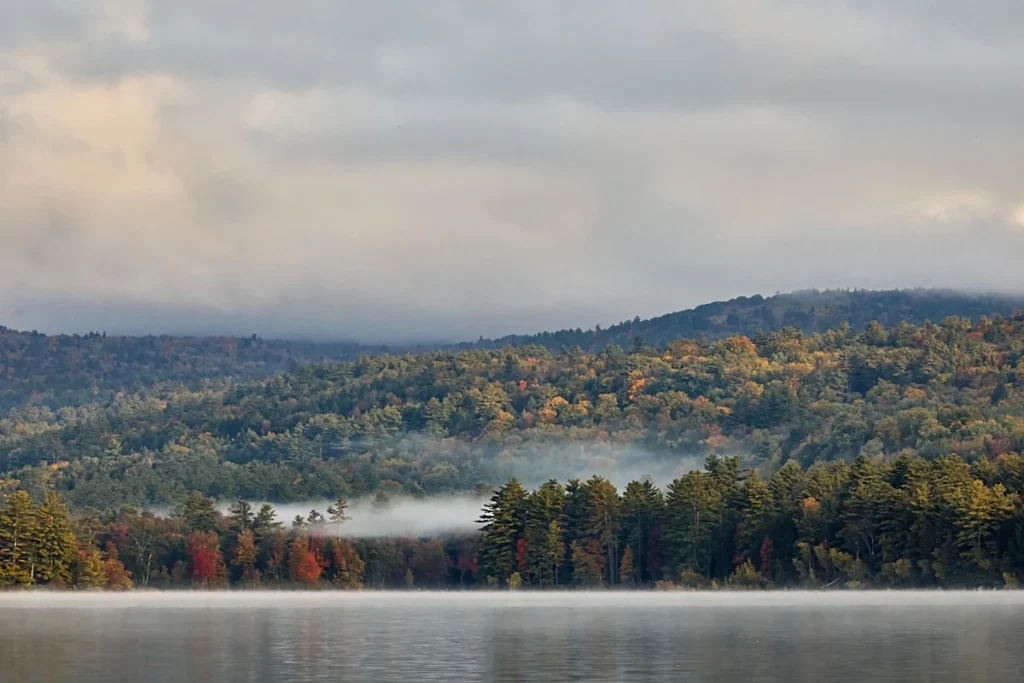
|
Loon Update
|

We still see our loons now and then, often near the cove they nest in. They may occasionally visit other lakes nearby to fish. The male above and female below are molting into winter plumage.

|
Wild Turkeys in the Watershed
|

Fifty years ago, seeing a Wild Turkey in our watershed would have been a rare event. With efforts in New England to re-establish habitat that supports Wild Turkeys, they have been making a strong comeback. Non-migratory, they are here year round. During the winter you may see them less often because they spend more time in forests where acorns and other tree seeds are available.
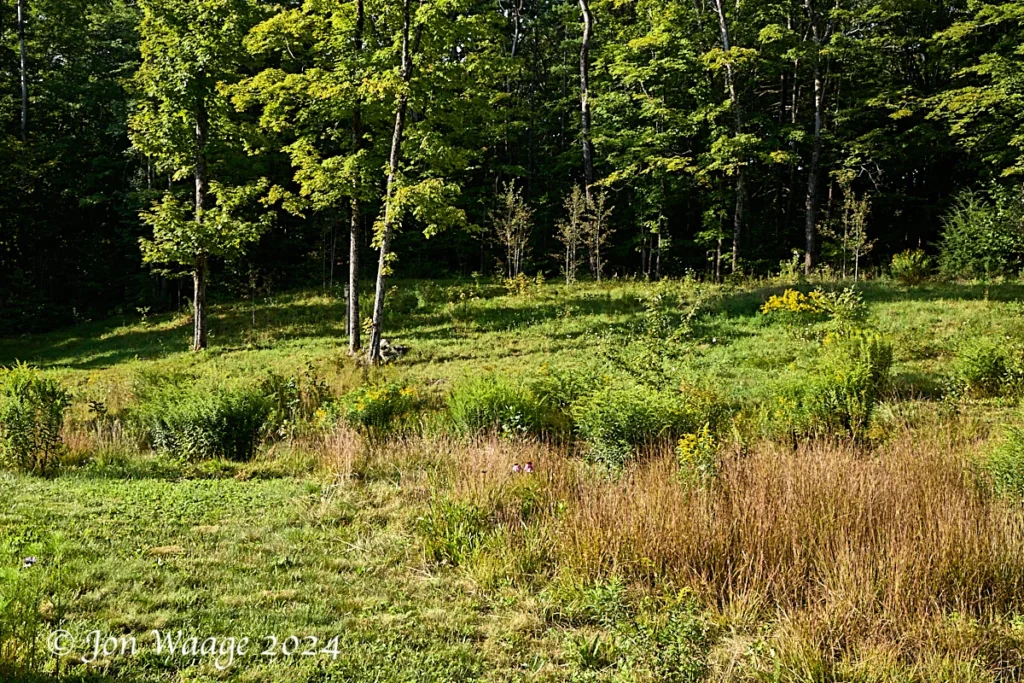
Turkey’s are very dependent on open meadow and early growth forest areas for food and safe breeding places. These habitats are among the most biologically diverse. Our wild backyard is such a place – a mix of grasses, flowers, shrubs and young trees. We see Turkeys here on a daily basis and want to share what we have learned about them and why they are welcome in our yard.
|
Turkey Social and Parental Behavior
|
Turkeys have an interesting social structure. Males and females are separate during most of the year. Male and female flocks each have a dominance hierarchy. In female flocks their hierarchy may remain stable over long periods. Male flocks may often be composed of brothers and their hierarchies tend to fluctuate more. Turkey flocks will wander a home range of 370-1,400 acres depending on food abundance.

The strutting Tom above shows off several important male display characteristics. The tail fan is of course the most obvious, but what about the colorful fleshy areas on his head?
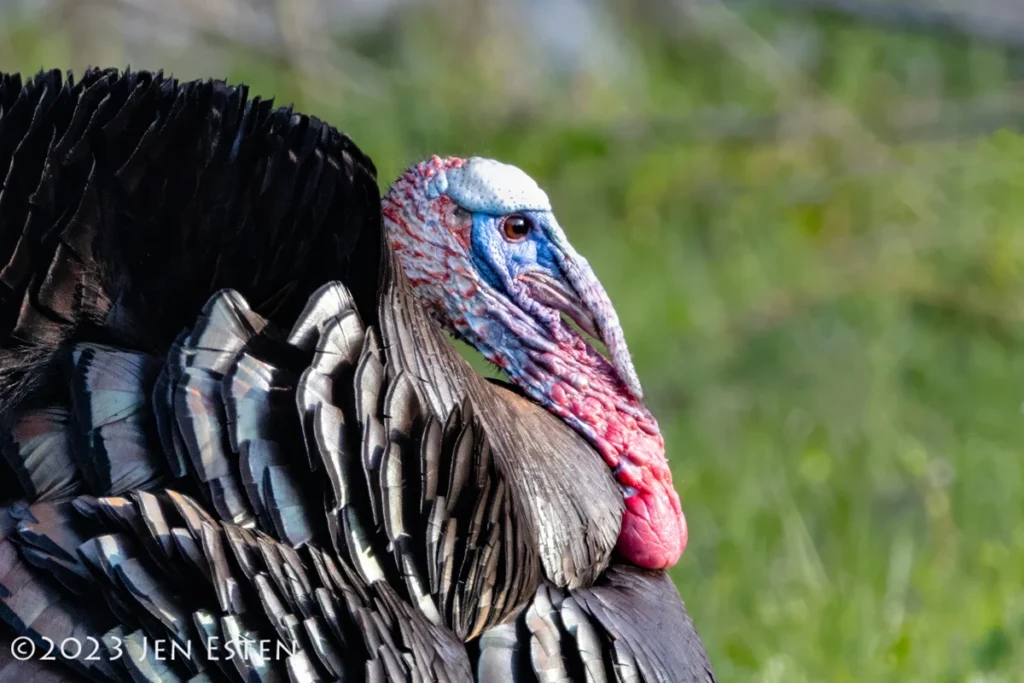
These fleshy areas and finger like projections are important in dominance displays and mate choice.

Females prefer males with lots of red coloration. Males with bright red colors have fewer parasites in them, signaling healthy traits that could be passed on to offspring.
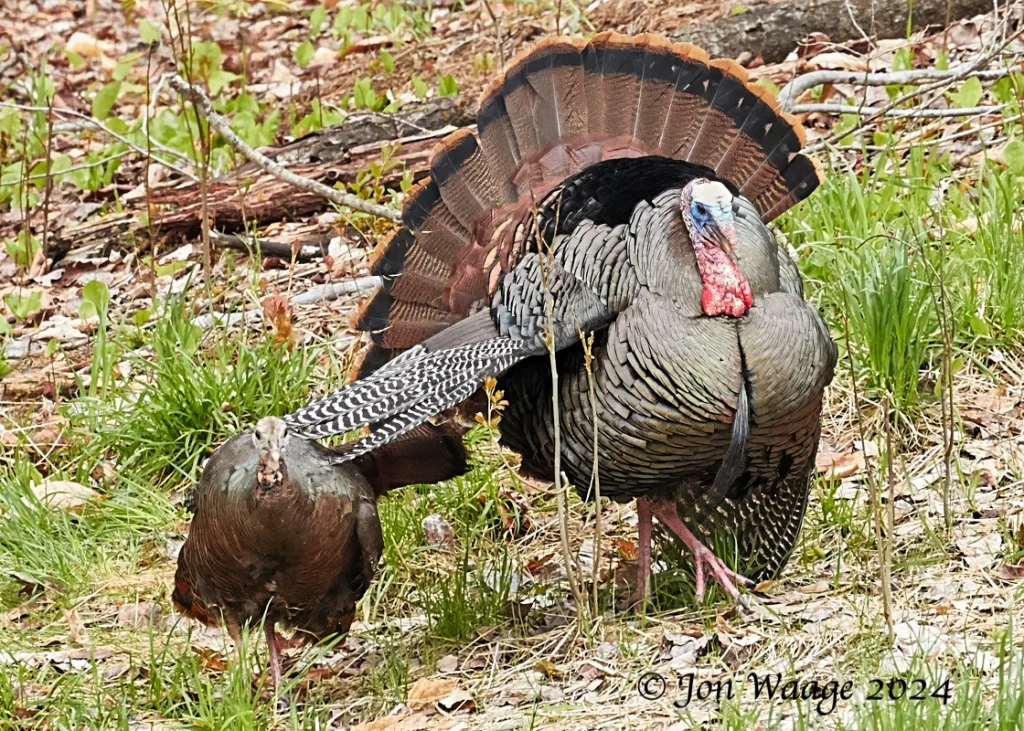
The strong sexual dimorphism between male and female Turkeys is apparent in the recently mated pair above. Females and poults are smaller than males and thus more susceptible to predation by coyotes, foxes and owls. Having bright colors like the males would make them more vulnerable. Females often join with other females and their broods to form larger flocks. Our backyard flock of 12 has three females and their poults. That means more eyes watching.
|
Raising the Brood
|
Males play no role in raising or protecting the poults. Over the course of each summer we watch poults grow up under the watchful eyes of their mothers. We get to see the females and their poults a lot since they use paths we mow through our meadow and spend a lot of time in our weed and insect rich “lawn” near the house.
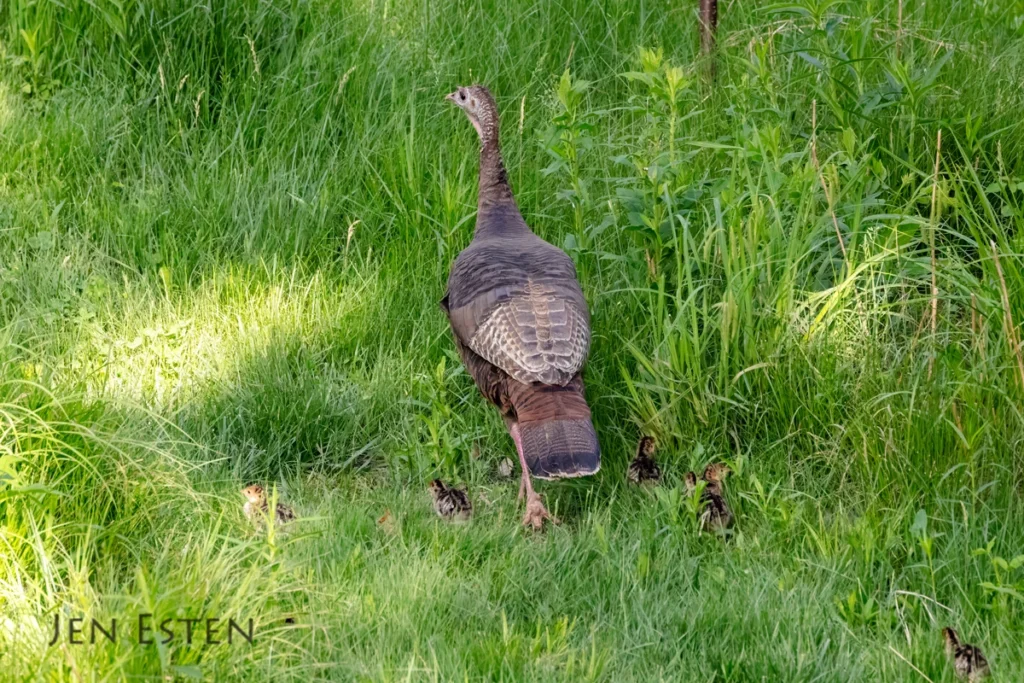
Poults hatch in late May. The ones above may be about a week old.
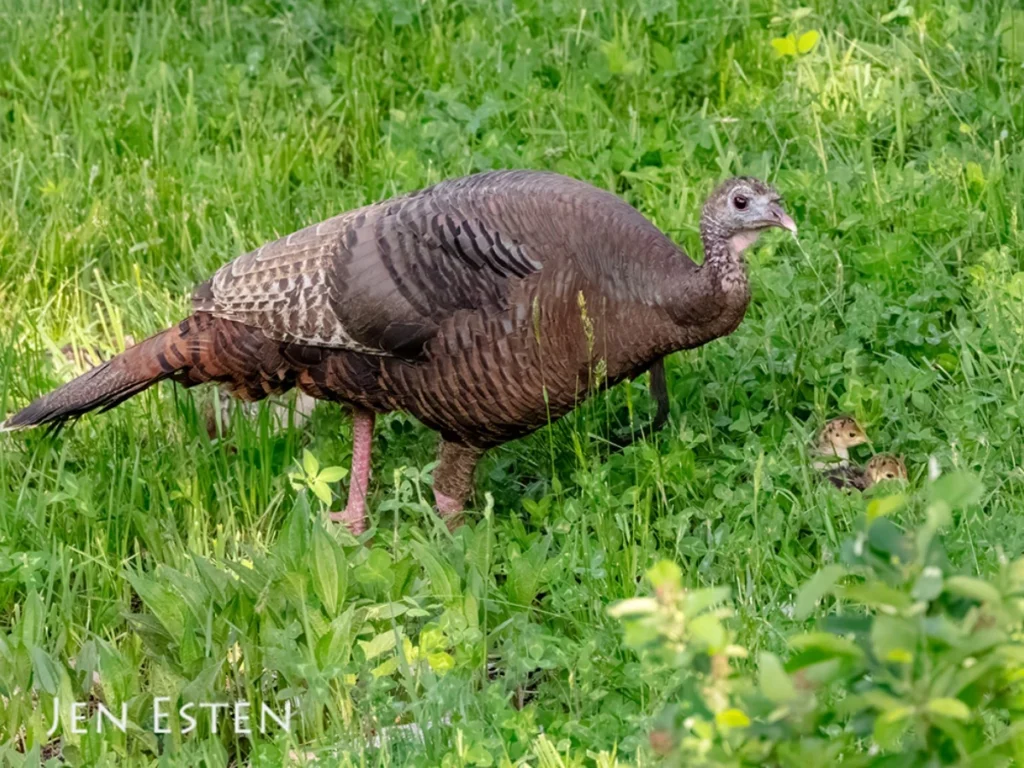
A closer look at the poults. The odd-looking “feather” (beard) hanging from the mother’s chest indicates she is fairly old.

Two females and their poults about a month old.

Nearly full grown at 3 months, poults are beginning look more adult in coloration.
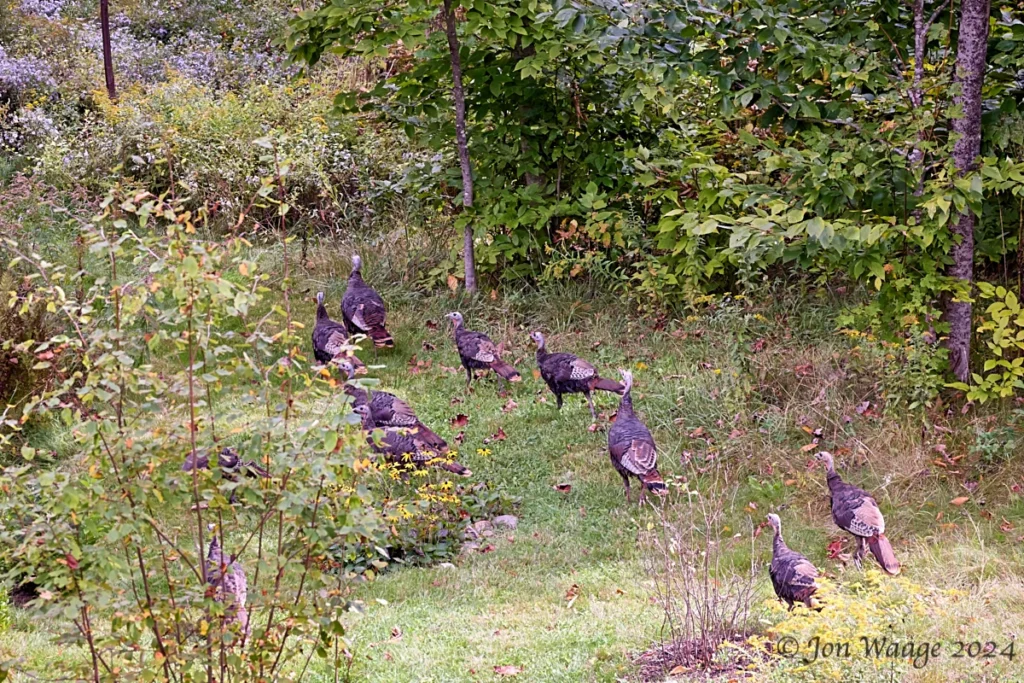
Most of our flock a week ago, two weeks after the photo above. It is hard to tell the poults from their mothers.
|
Food for Them and Services for Us
|
Adult Turkeys eat a variety of seeds, nuts and fruits as well as insects. Like most birds, the young feed on insects and other invertebrates, including ticks.
Unlike birds that raise their young in nests, newly hatched poults are precocial, highly mobile and able to feed themselves. They learn what food to eat by watching their mother and soon learn to forage on their own.Their excellent vision allows them to find even the tiniest animals and seeds.

Poults are voracious insect and tick eaters and are fun to watch chasing after grasshoppers.
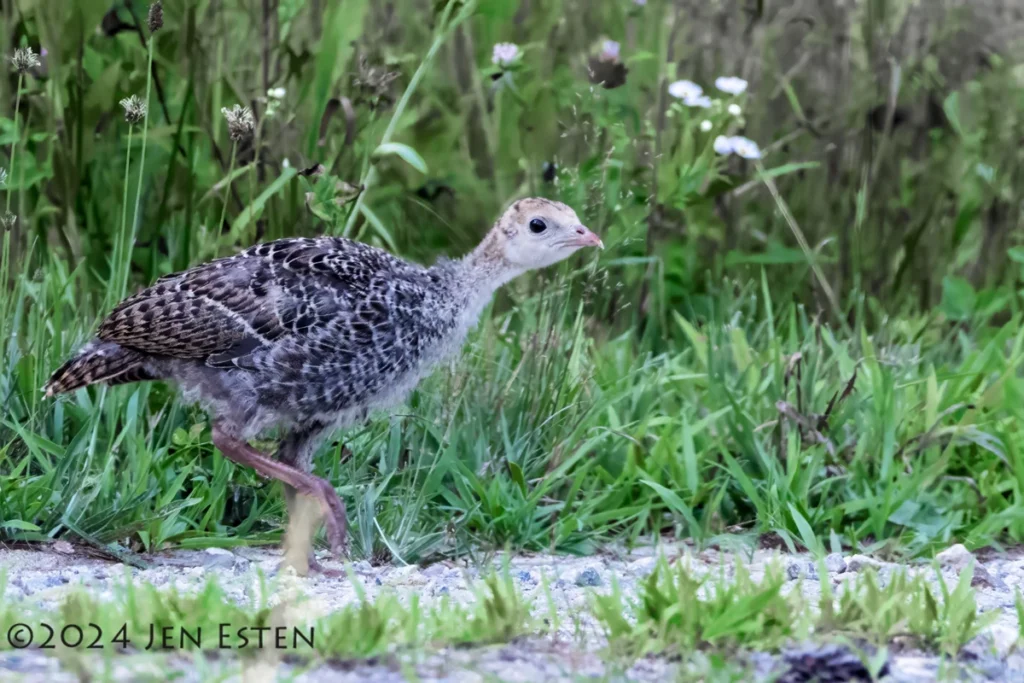
An important part of their diet is small stones which are stored in their crop to grind up what they eat.
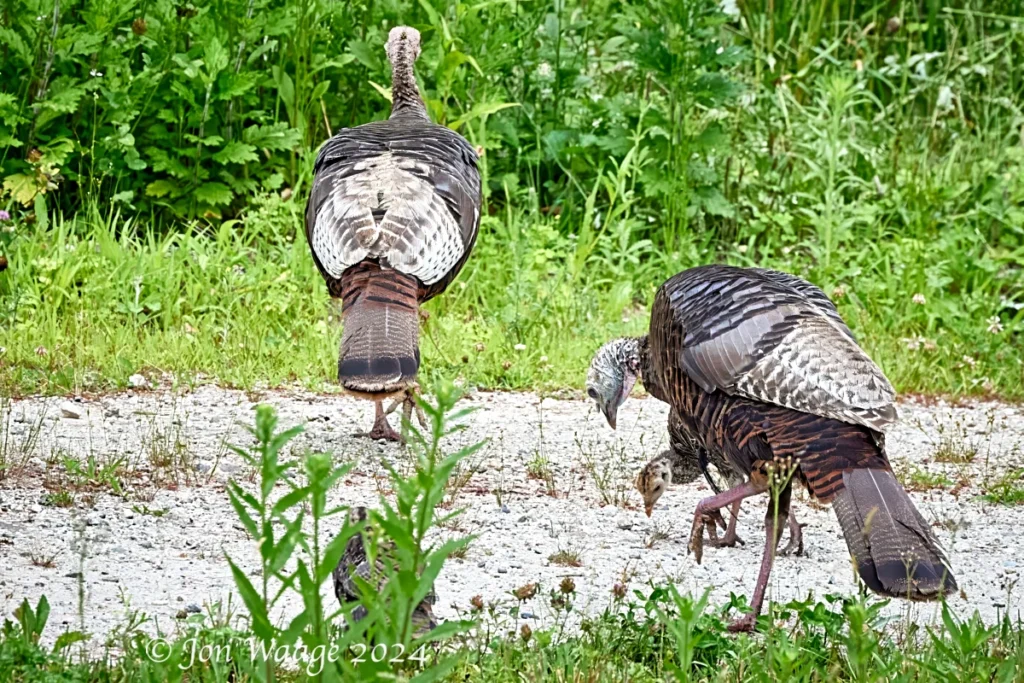
Thanks to several visits a day from these hungry poults, we seldom encounter ticks and have fewer grasshoppers eating our plants.
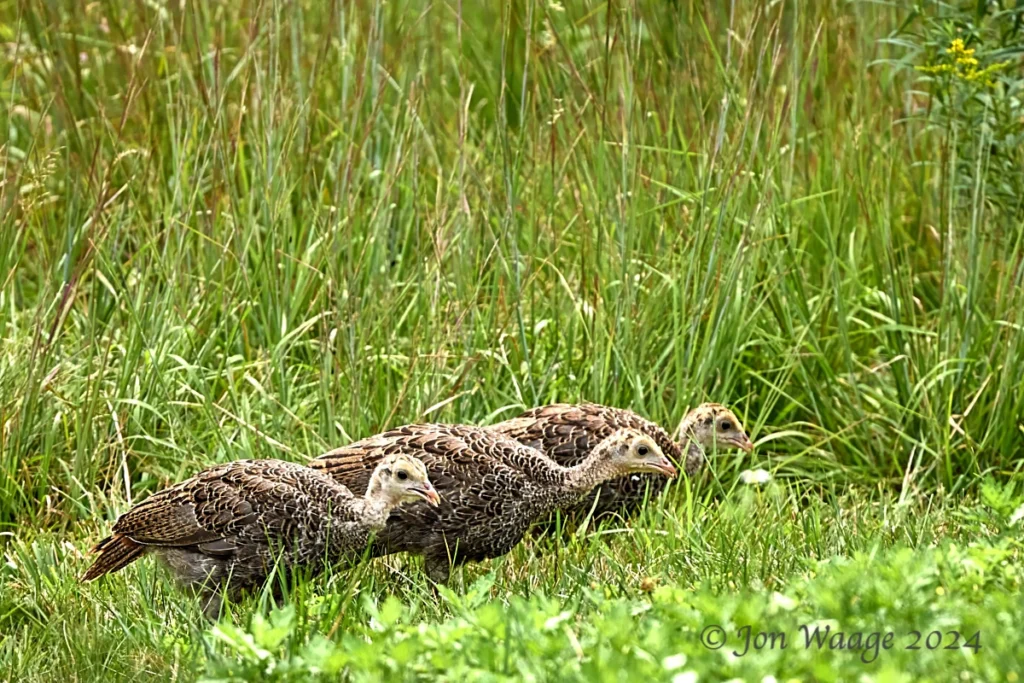
They also eat lots of other plant pests in the yard and garden.
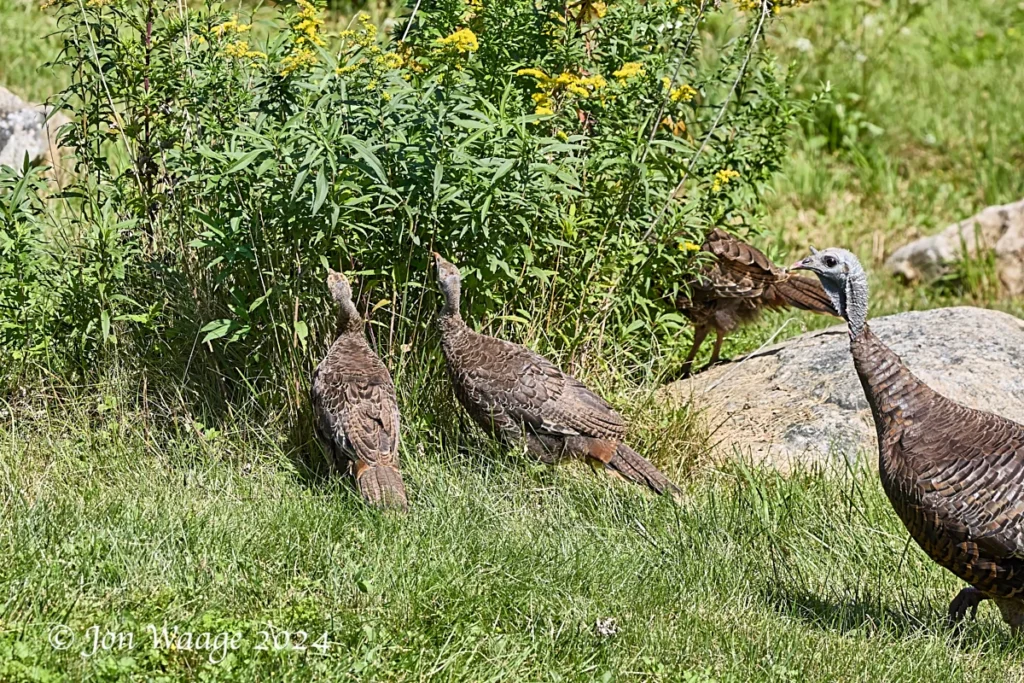
Our small “lawn” area of native grasses and weeds is mown periodically to 4″. It is not fertilized or watered. Poults get a lot of their meals from the “lawn”. This time of year they are foraging for Crabgrass (Digitaria spp.) seeds. Crabgrass is a much hated lawn weed in the US, but its leaves and seeds are used for flour, beer, animal fodder and medicinal products around the world.
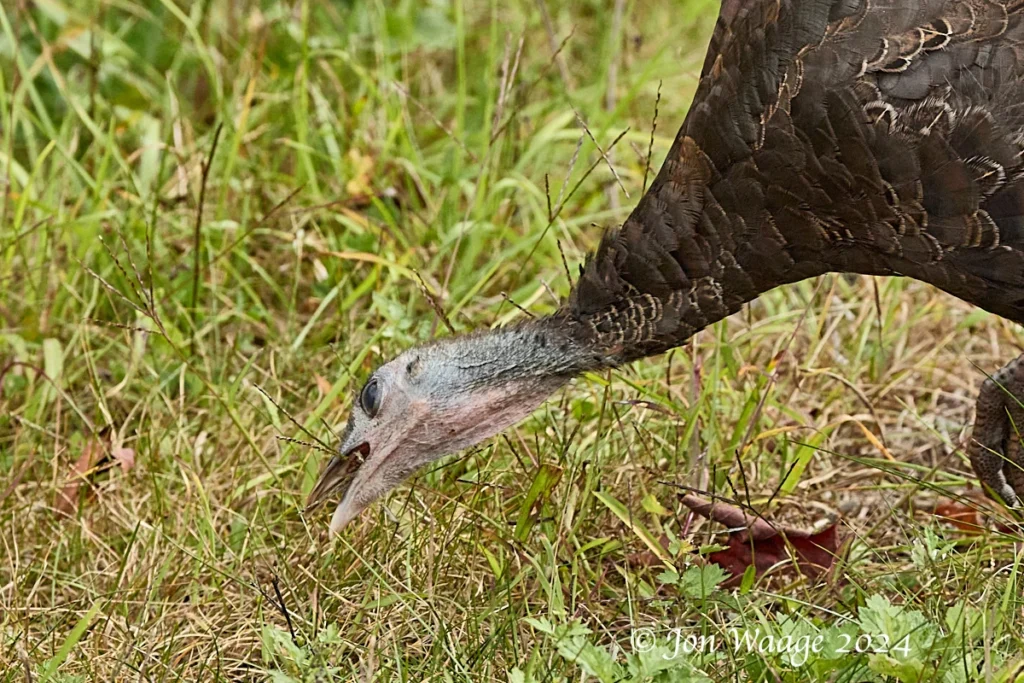
Turkey poults love the seeds! Above and below, a poult grabs a Crabgrass seed head. It will then strip its seeds off and swallow them in one move.
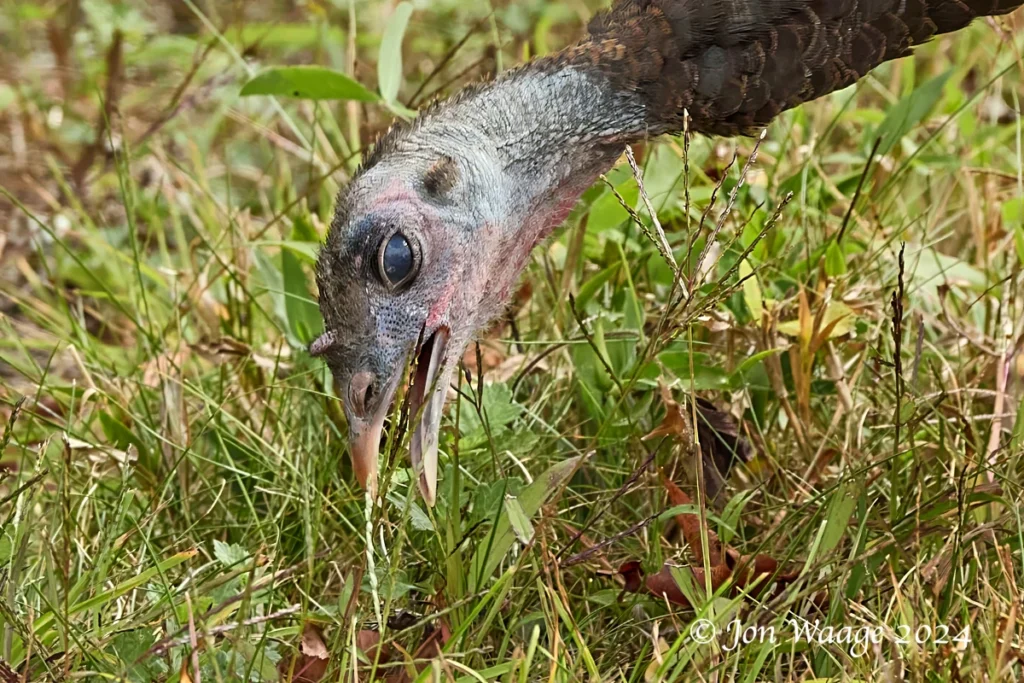
By now you get the sense we love having the Turkeys in the yard. We benefit from them eating so many insects and ticks and the simple joy of watching them almost daily. In exchange we provide nesting places and food (insects, ticks and seeds). As they move about the yard, Turkeys return the favor by leaving behind fertilizer.
The fascination for heavily watered, fertilized and closely mown lawns means less suitable habitat for turkeys and most other wildlife. Habitat loss is a major reason for the decline of many species. Even letting a little bit of your yard go wild can help.
Not everything Turkeys do in our yard is appreciated. They love to wallow in mulch and dry garden soils. That helps them clean their feathers and remove insect pests.
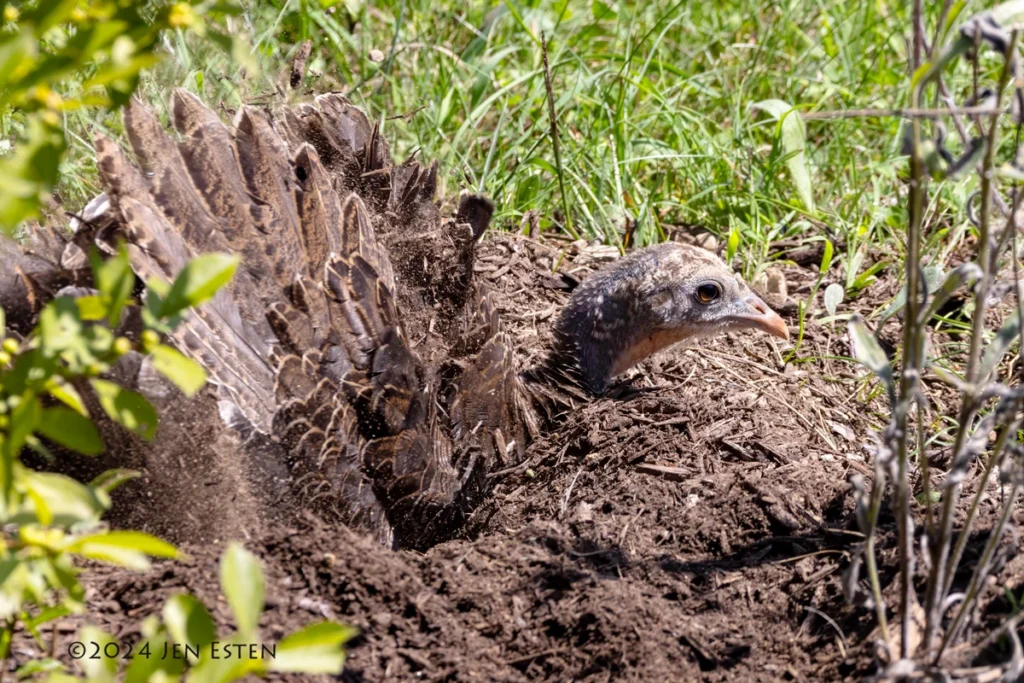
Dust is a great insecticide. Insects breathe through a system of openings in their cuticle allowing oxygen to reach cells via small tubes – trachea. Dust clogs those openings and tubes.
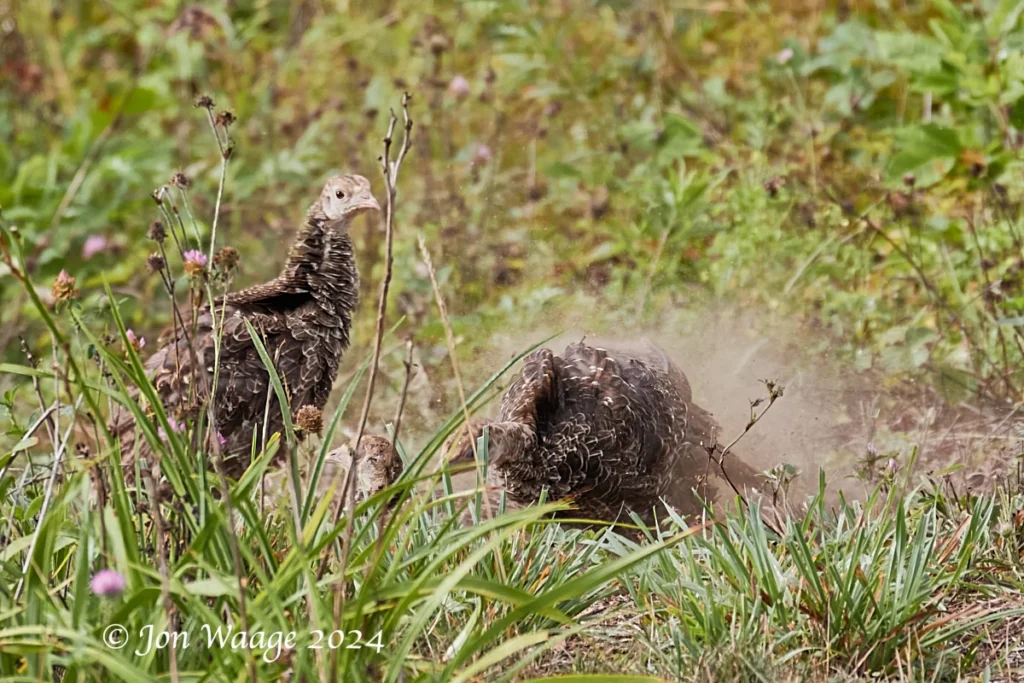
But we are pleased to provide them certain places where they can take dust baths. We protect new vulnerable plantings by placing stones around them to deter dust bathing.
|
Roosting at Night
|
Most people assume that turkeys are weak fliers. However one of our daily joys is watching adults and poults fly up into our tallest pine trees to safely roost at night. By three weeks, poults are able to fly up with their mothers.

We hope we have provided you with a better understanding of Turkeys and why they and the habitat they need are an important part of our watershed.
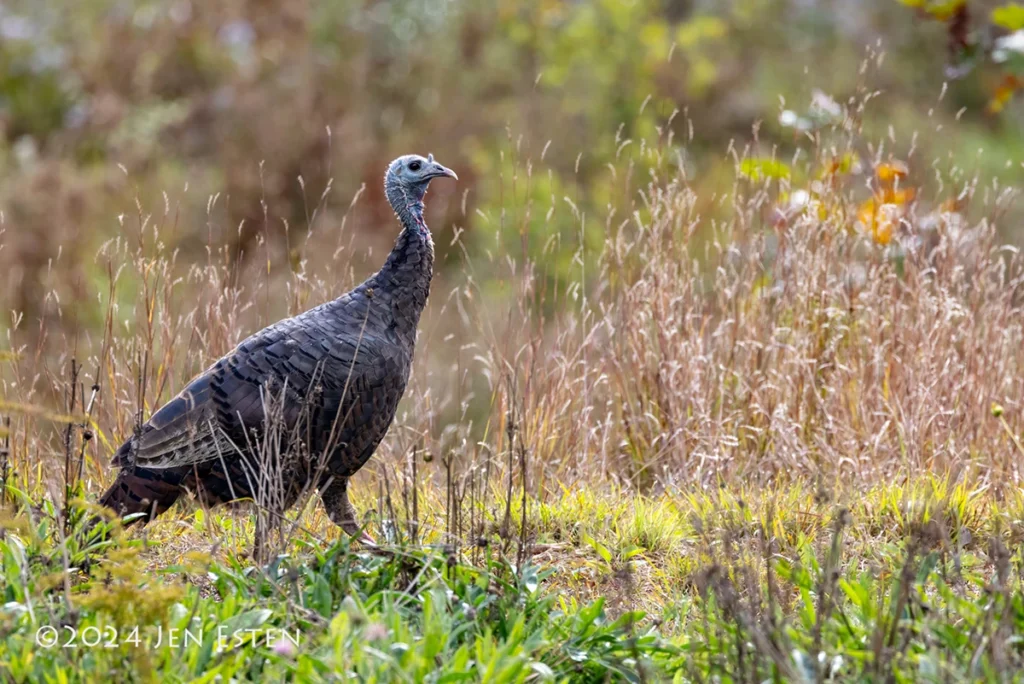
Please keep an eye out for turkey families crossing roads.
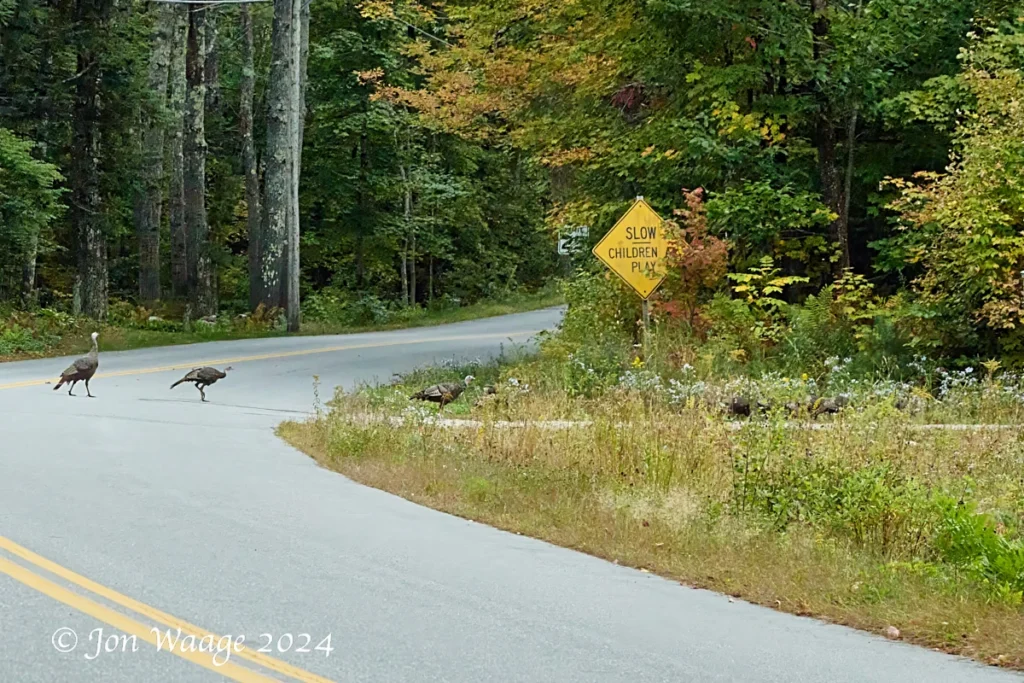
Bye for now… Jon and Jen

Text and Photographs by Jen Esten and Jon Waage

